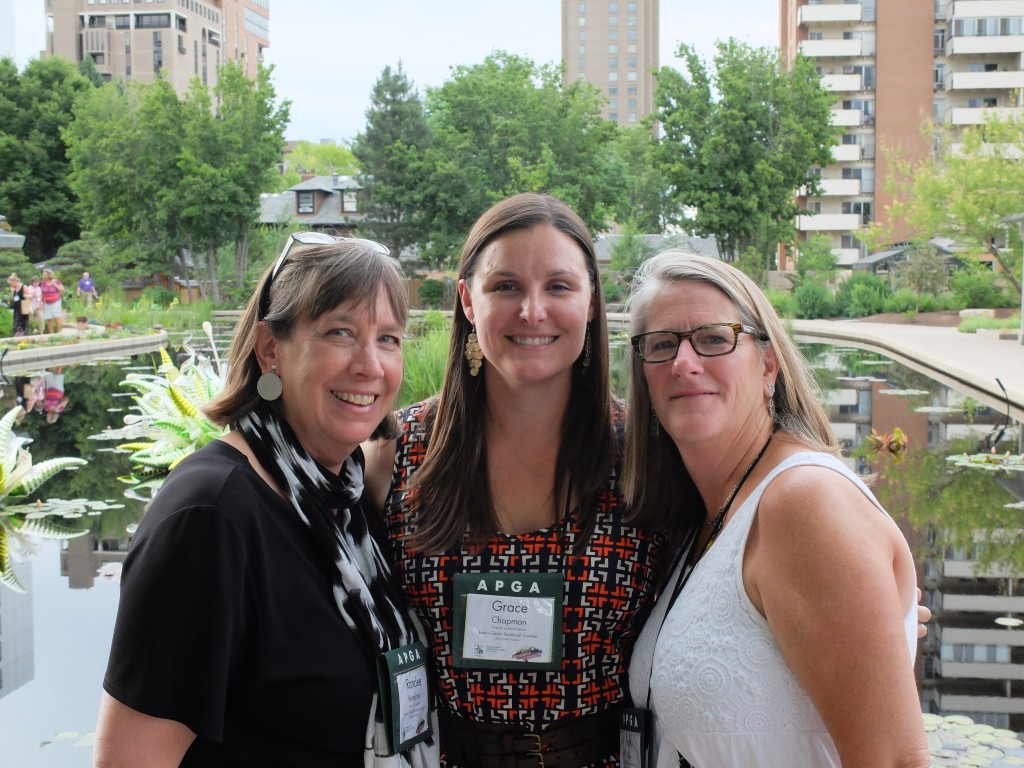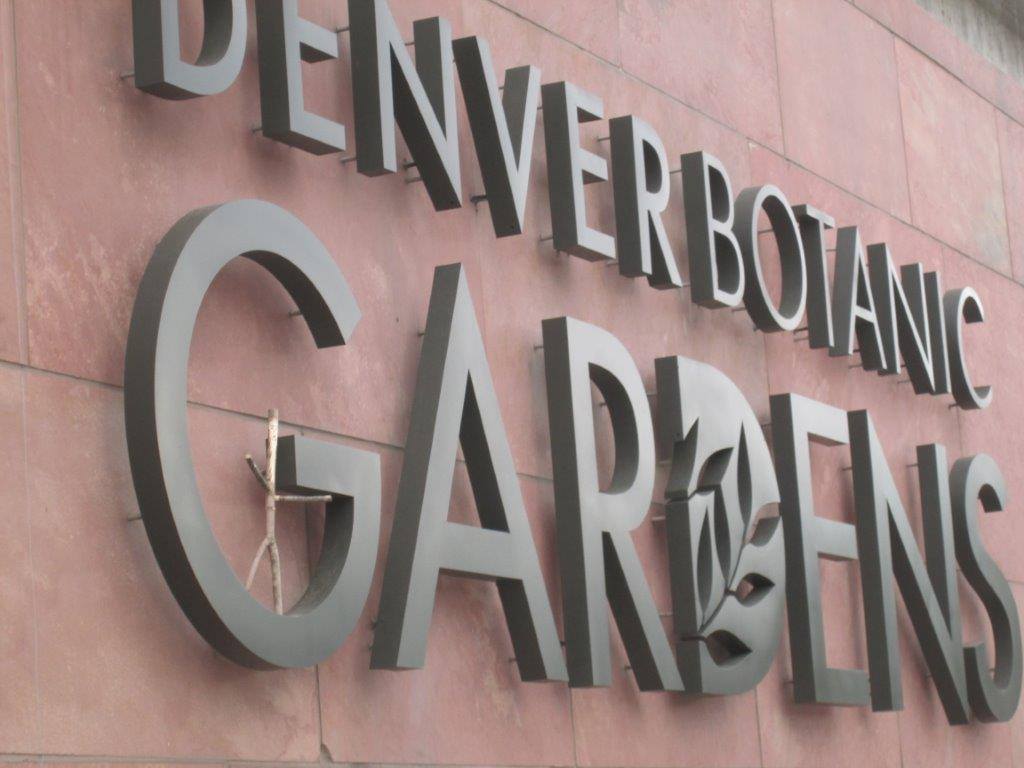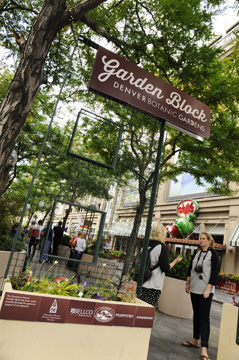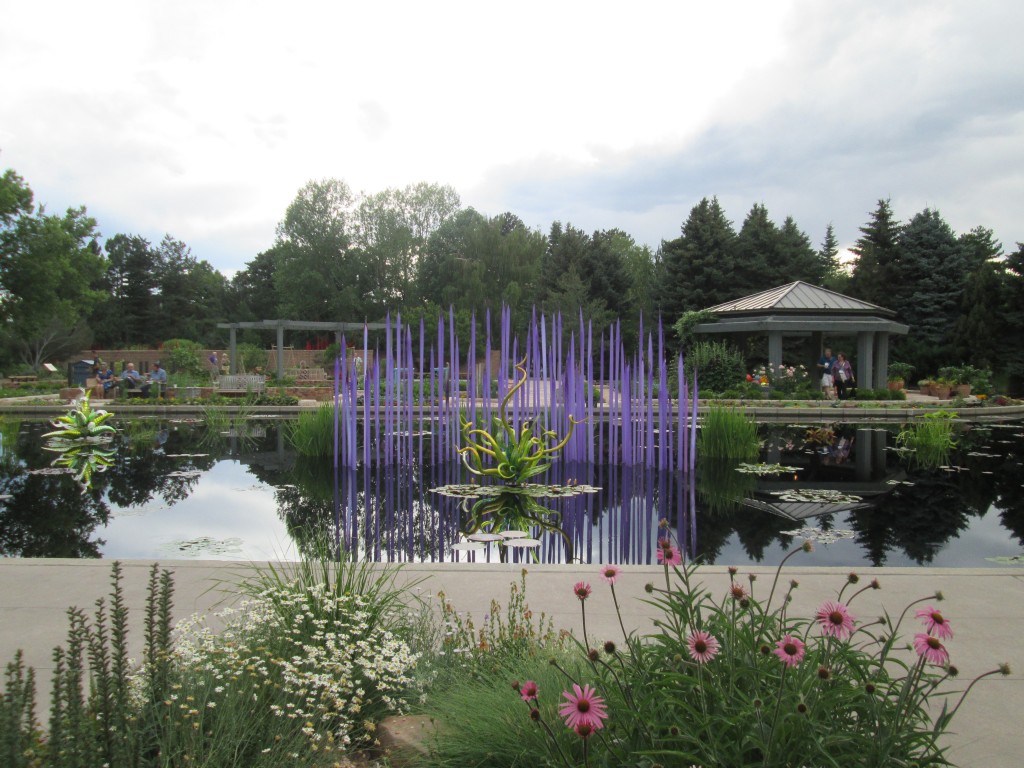Views from The Mile High City
by Randee Humphrey, Director of Education, Lewis Ginter Botanical Garden
The American Public Gardens Association’s “Everyday Magic” conference was held in Denver in late June, and I was fortunate to attend, along with Grace Chapman, the Garden’s Director of Horticulture, Kelly Riley, Children’s Education Manager, and the intrepid traveling Stickman. It was a whirlwind week, full of inspiring lectures, invigorating sessions (I presented one on Public Gardens and Community Engagement) and special events, hosted by the Denver Botanic Gardens, the Gardens on Spring Creek, the Betty Ford Alpine Gardens, and the Cheyenne Botanic Gardens.
Generally I return from conferences like this exhilarated and exhausted—there’s so much information to absorb, so many contacts made to follow-up on, and many ideas to share with my colleagues. And always I come away very proud of our Garden, our community of patrons, and especially my staff colleagues, who work so hard and unselfishly to keep the many wheels of success in motion. At only 30 years-old, Lewis Ginter Botanical Garden is among the younger of public gardens, and even so, we’re pretty mature by every measure in the sophistication of our operation. It’s a good feeling to come away from a national conference with the knowledge that on the whole we’re doing a really good job.
Over the past year, I’ve been spending a portion of my time nurturing Lewis Ginter Botanical Garden’s role in the larger community, through an initiative we’ve dubbed Beautiful RVA. It’s a regional coalition of public and private agencies and organizations all invested in improving the quality of life in greater Richmond through public horticulture, urban greening, and beautiful place-making initiatives. The Garden is at the center of this coalition. With other key partners, we are working to increase local capacity to accomplish urban greening and beautiful place-making projects that are often beyond the reach and resources of local government. The Garden is fostering community momentum and seeing where civic will, grassroots engagement, and collaborative spirit takes us. And in many ways, we’re positioning the Garden for the next stage of its evolution and influencing others to follow our lead. We not only want to be at the table, we want to offer the table around which these fundamental civic opportunities can be explored with other willing partners.
So, through this lens — with a sharp focus on how public gardens use their leverage and leadership to help transform the urban landscape — I paid special attention in Denver to the quality of its urban landscape, and whether the Denver Botanic Gardens had played an influential role. And the answer: the Denver Botanic Garden is everywhere—at its flagship site on York Street; at the Denver Botanic Gardens at Chatfield, a working farm located along the banks of Deer Creek in southern Jefferson County near Littleton (where Denver Botanic Gardens runs a 5-acre Community Supported Agriculture operation); and tours at Mount Goliath, a mountain peak in the U.S. Forest Service Mount Evans Recreation Area in the Arapaho National Forest. Within two blocks of the Marriott conference center was the 16th Street Mall, at all hours the friendly, clean, safe, and bustling heart of the City. Downtown Denver describes the scene:
….considered the premier pedestrian environment in the Rocky Mountain region, it is the commercial heart of Downtown Denver and a main attraction for a rapidly growing number of visitors and conventioneers. On average, 2.3 million pedestrians visit the Mall every year, and in the summer, 30,000 pedestrians walk the Mall every day. Nearly 50,000 people use the FREE MallRide on an average weekday, and the Mall has become the linchpin of RTD’s transportation system by connecting light rail stations, express bus terminals and local bus routes between Union Station and Civic Center.
And yes, the Denver Botanic Garden’s imprint was on the 16th Street Mall, too, with the Denver Garden Block installation. Is there anything that this public garden doesn’t do? I can’t imagine—they also are among the keystone organizations funded by the Scientific and Cultural Facilities District, a regional consortium that provides over $40 million a year to over 300 local and regional institutions, through a 1/10 of 1 percent sales and use tax adopted by a seven-county metropolitan area.
It’s exciting to imagine how our City and region will grow in the years ahead. Personally, I live along the promising Boulevard corridor, and wonder how the planning process for this area will unfold. Denver inspired me to imagine — as I strolled the 16th Street Mall and dined at its outdoor cafes, enjoyed impromptu concerts on upright pianos scattered along the Mall, and easily navigated to nearby museums and Coors Field on foot (or by rent-a-bike, stations everywhere! )— that our Boulevard could become THE BOULEVARD. A walkable, bike-able (and still car-friendly), local, eclectic, and beautiful Garden District. And naturally I wonder, what role might Lewis Ginter Botanical Garden play in transforming this urban landscape, so full of potential.



